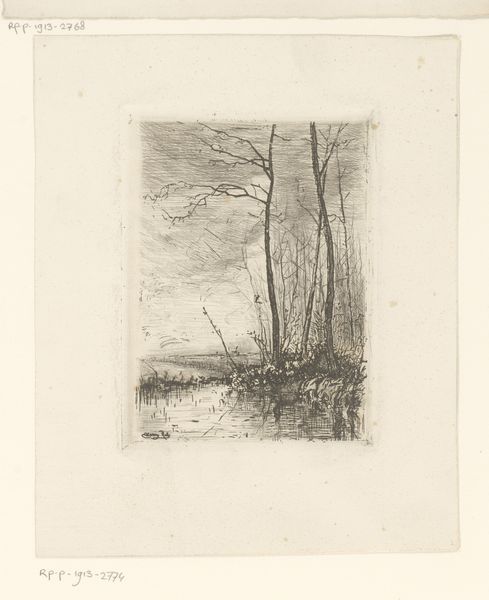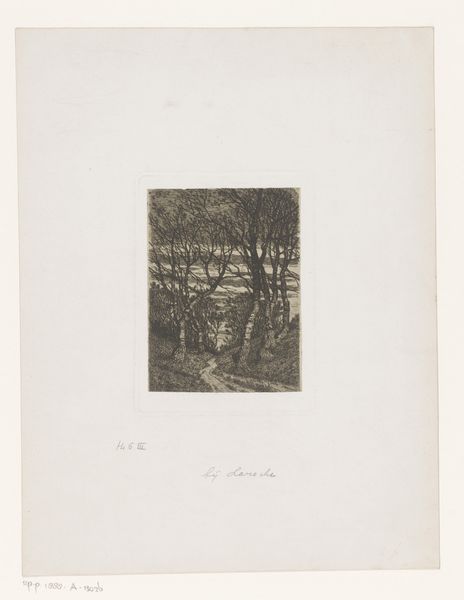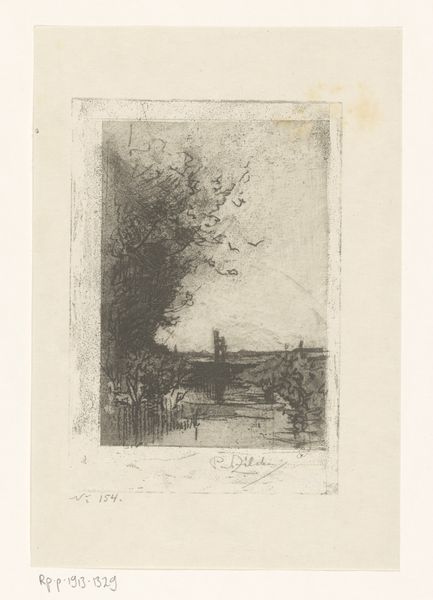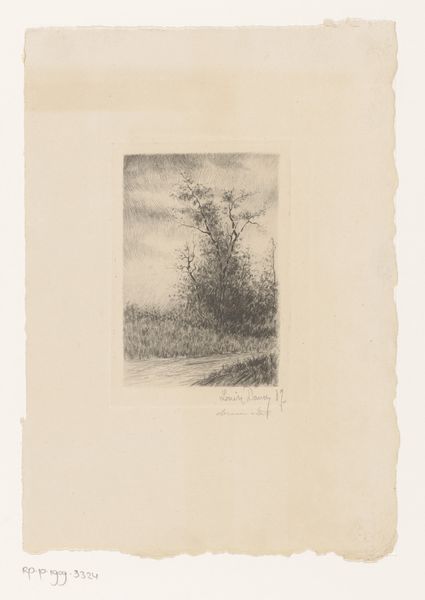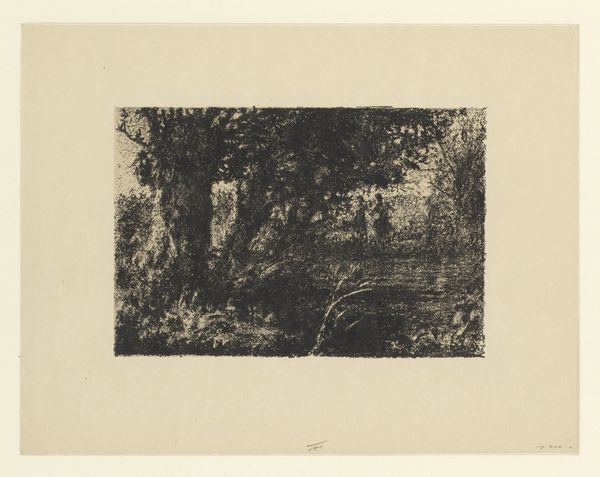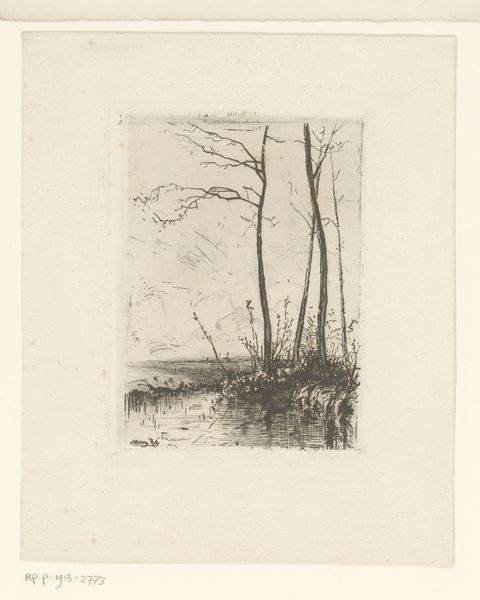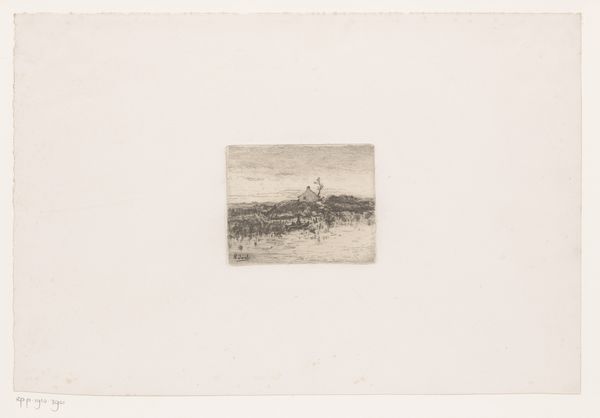
drawing, lithograph, print, paper
#
drawing
#
lithograph
# print
#
impressionism
#
landscape
#
paper
Dimensions: 220 × 165 (image); 281 × 220 mm (chine); 543 × 400 mm (sheet)
Copyright: Public Domain
Editor: We're looking at Camille Corot's "Beneath the Trees," a lithograph from 1871 currently residing at the Art Institute of Chicago. There's almost a frenetic energy in the scribbled lines he uses. What does this work evoke for you? Curator: You know, when I look at it, I feel a kind of wild, almost untamed peace. It’s like those days when the wind whips through the trees, but down on the ground, in the heart of the woods, there's still this profound stillness. Corot captures that duality, doesn't he? Do you see how he uses shadow? Editor: Yes, the darkness definitely adds to the mood. Is it meant to feel a little unsettling, or am I reading too much into it? Curator: Perhaps a bit of both. Think of it as the sublime. Nature has this awesome, powerful aspect that's beautiful, sure, but also makes us feel small, doesn't it? A reminder of the wild heart beating just beneath the surface of things, that primal energy. You know, there's something deeply human, almost yearning in those scribbled lines too. Editor: That's fascinating. It makes me see the drawing as more than just a landscape, almost like a state of mind. Curator: Exactly! I wonder, is that a figure down there in the bottom left? It is so ambiguously placed! Maybe it isn't there at all. Corot's work really plays tricks with my perception of place. But these ambiguous elements lend so much of the work its magic. Editor: That's a wonderful point! It’s as if we're invited into this space, this almost ethereal grove, to just be still and breathe it all in. Curator: Precisely. And isn’t that the magic of art – a quiet invitation to come closer and contemplate? I really enjoyed your comment, as I hadn't previously seen this place of trees as so deeply inviting, and almost hospitable. Thank you for that.
Comments
No comments
Be the first to comment and join the conversation on the ultimate creative platform.

